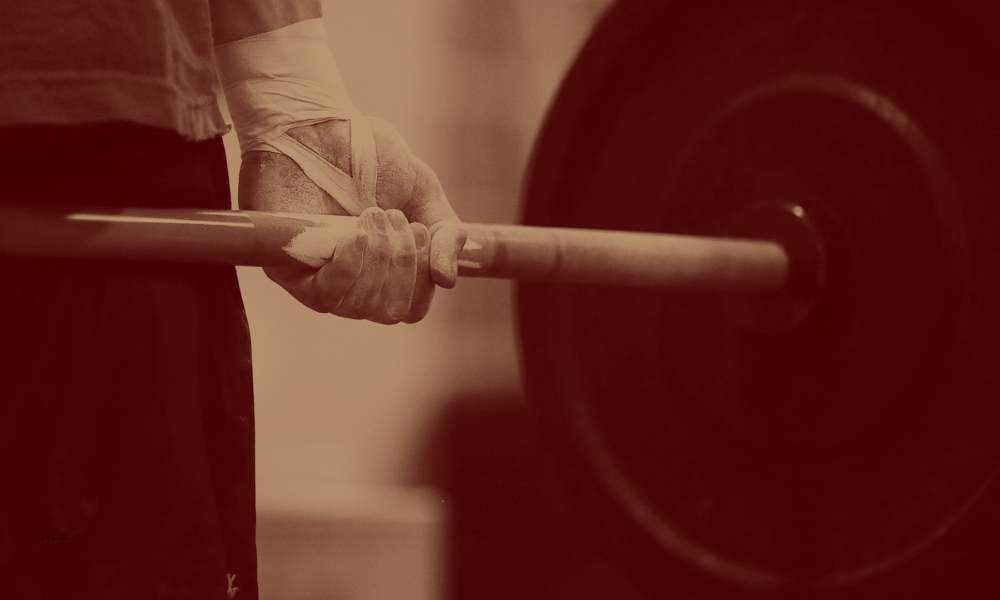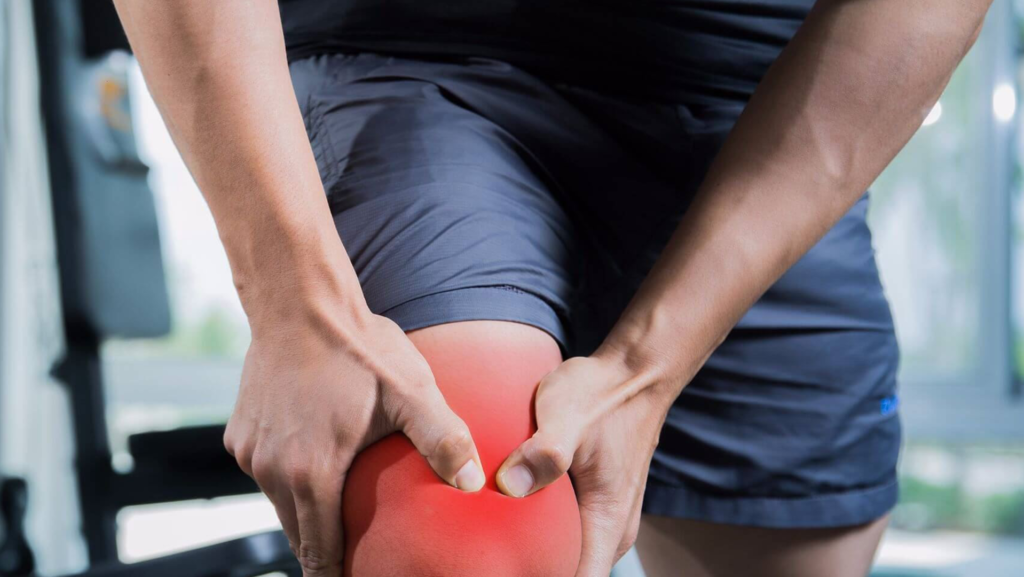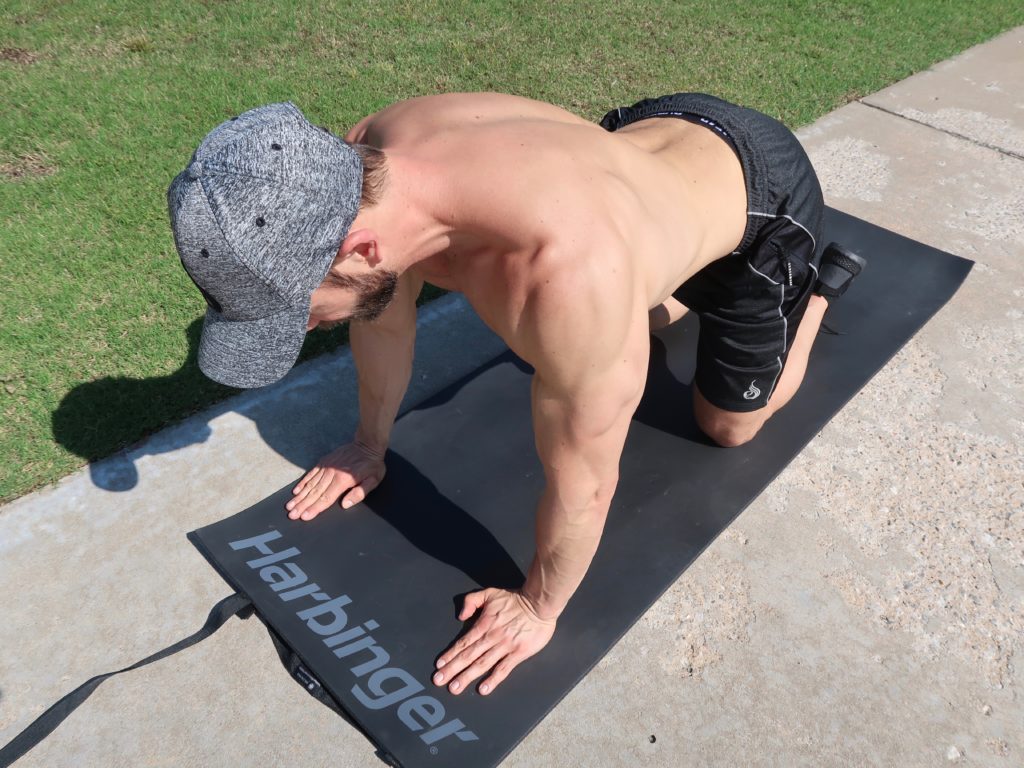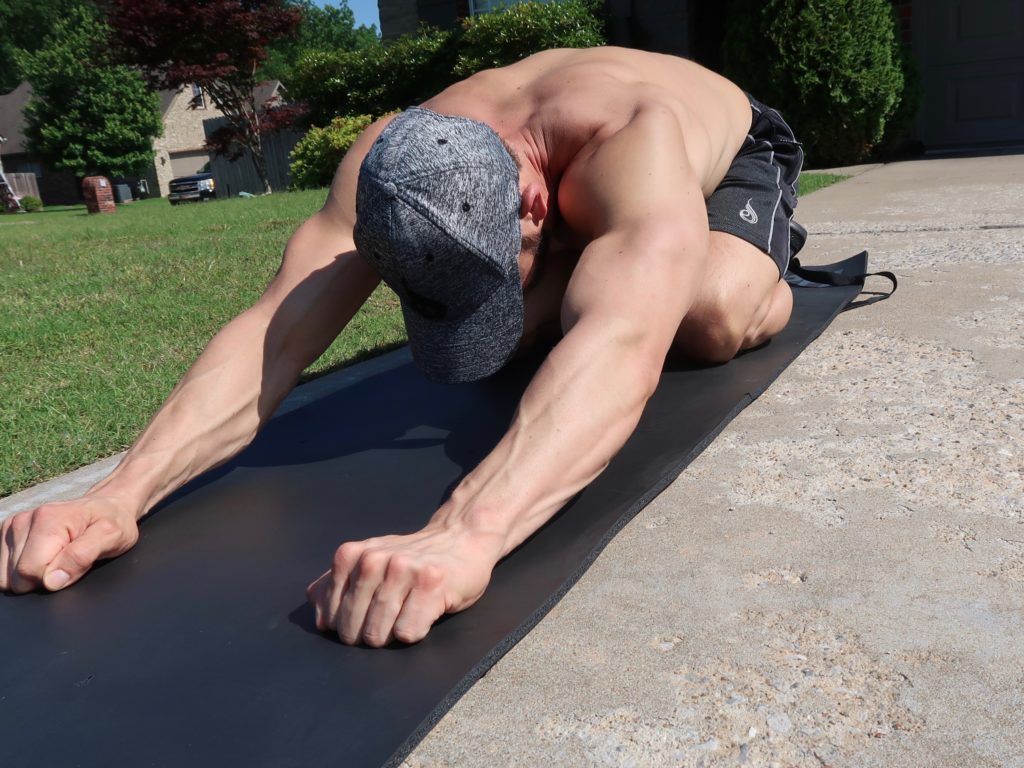

The last time I threw my back out was over two years ago while pushing my deadlift limits. I knew I shouldn’t have tried that last set. My recent lower back spasm occurred while just messing around here at the house this last Memorial Day weekend, literally doing nothing. This latest occurrence was probably the worst to date. I just laid there on the floor for a good while in pain before my wife could even help me get up. That first 24 hours, I could barely walk and it was really more like a shuffle. Besides the obvious pain, the other bad thing about all this is that I am a personal trainer and extremely active. My whole day is built around my workouts where I design new programs, as well as film and photograph content for sponsors, clients, and followers worldwide. Working out is my livelihood.
At age 42, I have to say I am in the absolute best shape of my life in regard to how I look and feel. I am a natural pro men’s physique three-time Champion and Master World Champion. The silver lining about this most recent low back injury is that I am in my ‘off-season’ and not looking to step on the pro stage again until 2020. Regardless of competing, I worked very hard to build what muscle I have naturally and to keep my body fat levels at a good, lower level. Enduring an injury like I just had can be tough both physically and, possibly more so, mentally. When you workout as much as I do, it’s likely that depression might set in; this could affect your attitude, motivation, and, most importantly, nutrition. Getting even a slight injury has the potential of setting us back if ground rules are not set immediately.
I ended up staying out of the gym for nine days, which is the longest period I can remember not working out since I started back up 6 years ago. I didn’t weigh myself the entire time I was down in fear of what I might see. After a week of my ‘staycation’, I gathered up the will to jump on the scale and was surprised to see that I didn’t gain or lose anything. I want to share some tips to help prevent injury, as well as key things I learned from my recent experience, to help you keep your hard earned progress if injured. While I will mention specific things I did to recover during my low back injury, most of these tips will apply to any injury that has you sidelined for a few weeks.
.
.

.
.
Preventative practices: Here are a few things to help reduce the chances of an injury occurring in the first place.
Take rest days seriously!
My recent lower back injury didn’t happen while exercising. I had no pain or indication that my back was at risk at the time. When one is very active, sometimes things just happen. But, I have to admit, I haven’t taken my ‘rest days’ seriously. Lately, I started doing extra HIIT cardio even on my off day, which is typically Sunday. From now on, I am taking a true and dedicated recovery day where I might go on a light walk with the family at most.
De-load more frequently
De-load weeks keep you active, but are less intense to allow your body to fully recover. Simple guidelines can include less volume, 60-70% weight, higher reps, and stopping before failure. It’s more than muscle that needs recovery, but also tendons, ligaments, and the central nervous system. I talk about and do de-loads, but just not as frequently as needed. I get so into progress and pushing my limits that I let the months slip by without ever scheduling a lighter week for deeper recovery. I truly think this is why I had my recent back spasm. I went too long without a de-load. Moving forward, I plan to schedule a de-load week once in every 8 week period.
Belts and straps
Tools such as lifting belts, wrist straps, and knee wraps all have their place. I typically use these aids when the weight gets heavy and they are needed for me to fully work the target muscle. For example, I don’t want my upper back progress to suffer if my grip is holding me back. As the weight builds, it’s not a bad idea to give your lower back, wrists, elbows, and knees extra support.
Warm up and stretch
.
.

.
.
I don’t know about you, but when I get to the gym I am always antsy to start lifting. Working out is something I look forward to each day. Often times, warming up can seem like an inconvenience so we just skip it. Warming up and light stretching is important! On the minimum take 5 minutes to row, jog, or even walk to warm your body up and lubricate joints. Then, depending on the workout, take a few extra minutes to do some light stretching and mobility work. I’ve had shoulder issues in the past, so I always take time to do shoulder mobility work before heavy chest and shoulder sessions. Nowadays, I go through a quick series of stretches for my lower back, including the yoga poses: Child’s Pose, Cat/Cow, and Knees to Chest. A total of 10 minutes to warm up and stretch just might prevent a week or more lost down the line. I personally will be much more consistent in this area moving forward.
Recovering from injury: These are the things I did to help recover from my recent back spasm. None of this advice should replace seeing a medical professional. If you are injured, visit your doctor.
- Rest: When it first happened, my primary goal was to rest and not make it worse. Almost every position was uncomfortable. I used a lot of pillows to find positions that didn’t hurt and just laid. Getting a full nights rest, and not my typical 5-6 hours, was important too. I made sure to get a full 8 hours the week following my injury so my body could heal itself.
- Icing: I did a lot of icing the first 48 hours. I kept the ice packs on for 15-20 minutes at a time with breaks in between each session.
- Anti-inflammatory: I took a healthy dose of ibuprofen and pain reliever every 6 hours. Get your doctors recommendation before taking any medication.
- Moving: After the first 48 hours, I was able to move easier. At this point, it was important for me to get up and walk around every 30 minutes or so. As mobility increased, I started going for longer walks outside, being careful to not overdo it.
- Light stretching: After the first 48 hours, when things started to loosen up, I started doing some light stretching including the Child’s Pose, Cat/Cow, and Knees to Chest.
.
.

.
.
Staying on track while down: When our normal routine gets disrupted, like not being able to workout or even move, it can be easy to do one of two things: 1. Not eat enough and lose weight, including muscle. 2. Eat too much of the wrong things and gain fat. After months of hard work, it would be a shame to lose hard-earned progress in a week or two. Here are some important tips to follow when you are out of the gym for several weeks due to injury to help you stay on track.
- Moving: After my low back strain I started walking when I could for mobility, but also to burn some calories. Something is always better than nothing. Getting outside for fresh air can also help with the depression that often sets in with an injury. Guilty! Depending on your injury, find a safe way to start moving when you can.
- Eating lighter: This is an important one. Do your best to stick to your normal eating and water drinking schedule. Try not to skip meals. We need to support muscle maintenance with nutrition but, since fewer calories are being burned, we don’t need to bring in as many calories. While I was sidelined, I did my best to eat very clean and lower carb. My breakfast was one scoop of whey isolate, one whole egg, and five egg whites.
- Staying hydrated: This can be challenging while not being as active, but do your best to bring in the same amount of water as normal. I think this is even more important while we are not able to workout. Besides all the health benefits, being fully hydrated helps us feel fuller so we don’t overeat.
- Supplementation: I made sure to keep my personal supplementation protocol going even though I wasn’t working out. This included my morning vitamins, whey isolate to keep my protein macro count up, and even creatine and glutamine. Taking some of these may not have been absolutely necessary, but I personally wanted to foster an internal atmosphere of recovery and muscle retention.
After a ten day break to heal I was able to get back to one of my favorite places- THE GYM! I might have been able to go in a few days earlier, but I felt it was important to have extra days to recover. The first week back I was careful with my exercise selection, weight, and intensity. Any type of injury is no fun. I wish we could all stay injury free, but accidents happen. The next time you are sidelined with a low back injury, or any injury, I hope these tips help you stay on track and keep your gains.
.
.

.
.
Author: Michael Wittig, ISSA CPT
Natural Pro 3x Champ
Kaged Muscle Athlete
IG: @WittigWorks
WittigWorks.com


















You must be logged in to post a comment Login